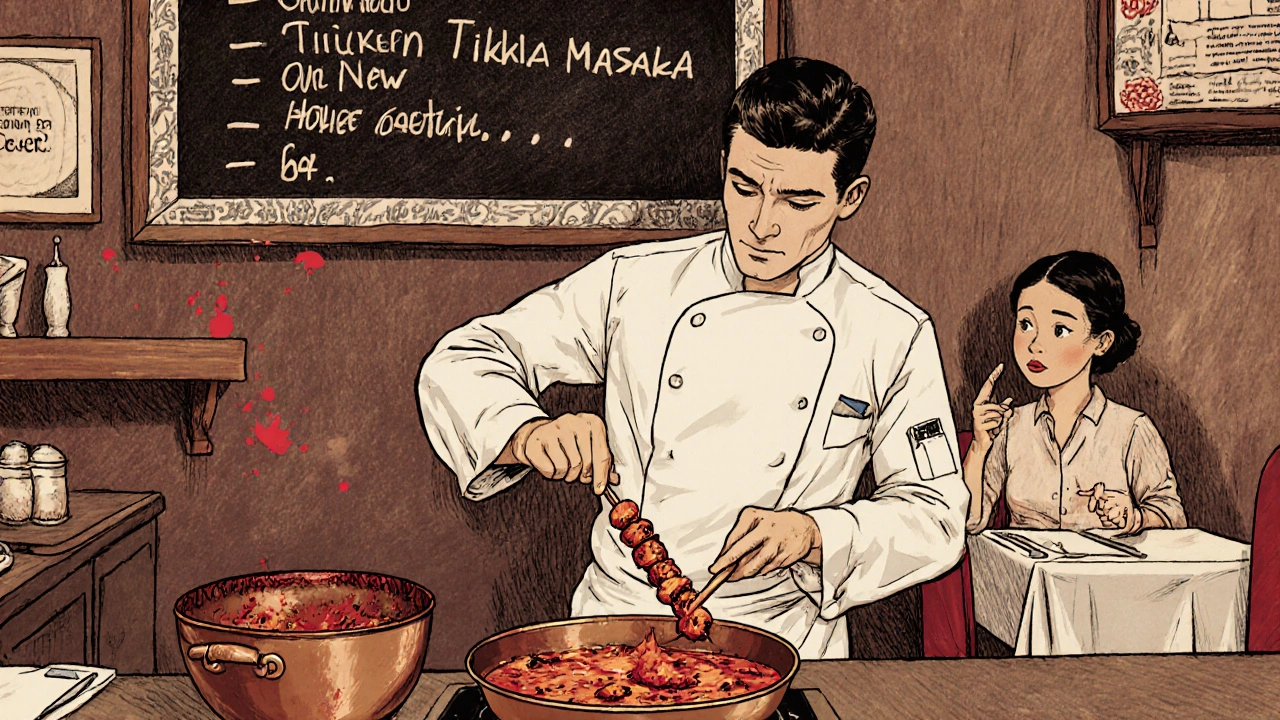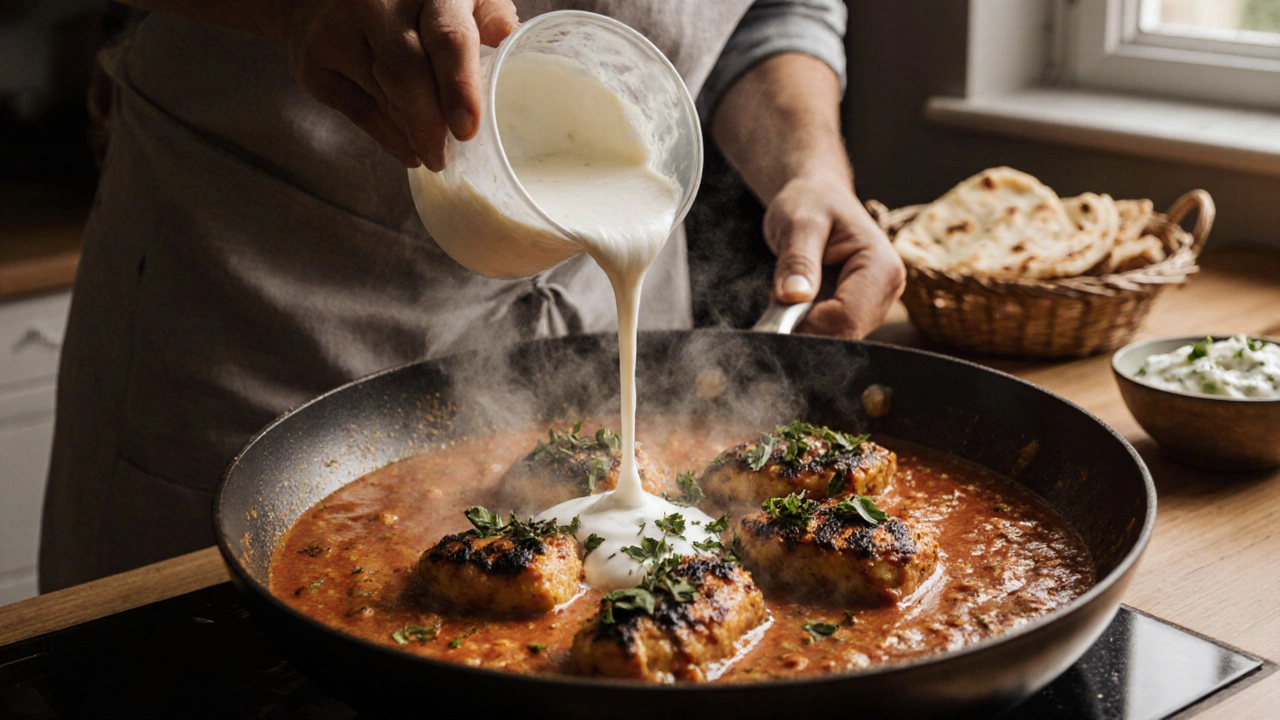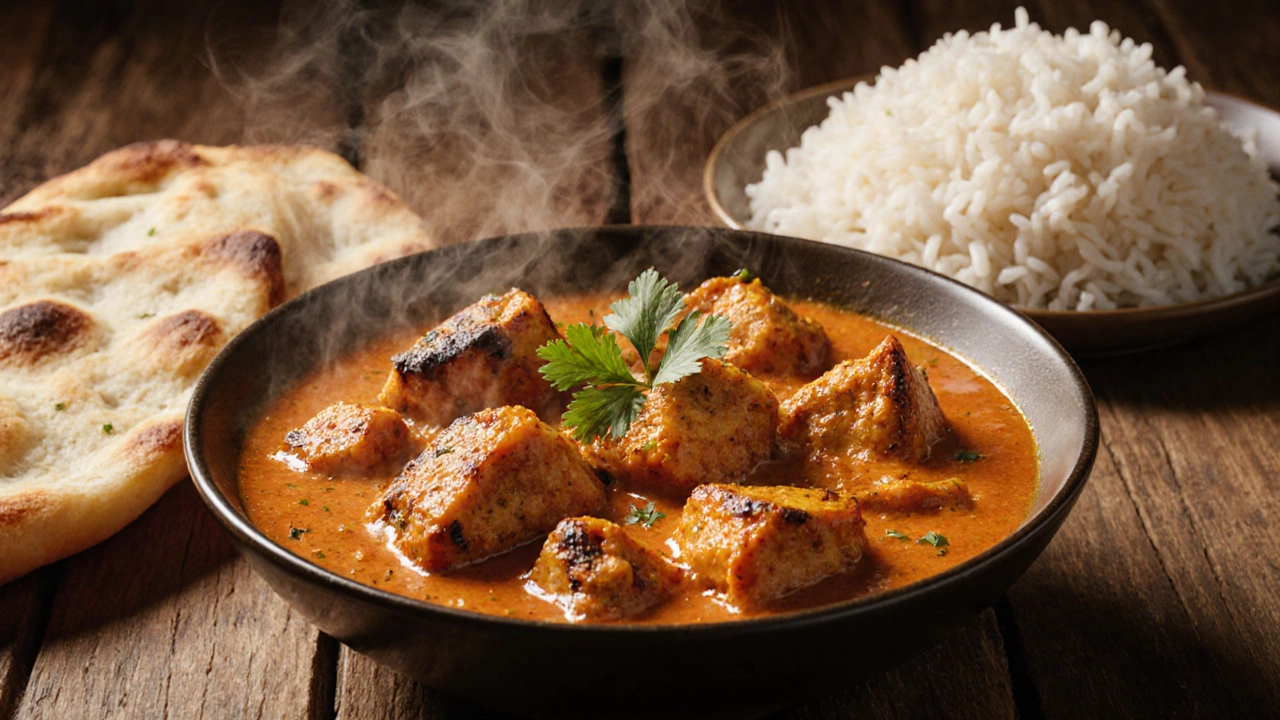Chicken Tikka Masala Customizer
Personalize Your Recipe
Adjust ingredients and cooking instructions based on your preferences
When you ask most Americans what they love about Indian food, the answer usually points to one creamy, mildly spiced delight: Chicken Tikka Masala is a tomato‑cream based chicken curry that originated in the UK and has become the most popular Indian‑style dish in the United States. It’s the dish you’ll find on the menu of every Indian‑restaurant chain, in grocery store ready‑meals, and on countless home‑cooking blogs. Below we unpack why it earned the title of America's favorite Indian dish, trace its surprising history, and give you a fool‑proof, weeknight‑ready recipe.
What Makes Chicken Tikka Masala So Beloved?
Three things set it apart from other Indian dishes that often overwhelm newcomers:
- Gentle heat: The spice level is modest, thanks to a balanced mix of aromatic spices and a generous splash of dairy.
- Creamy texture: Tomato puree, heavy cream, and a touch of butter create a sauce that feels indulgent without being greasy.
- Familiar flavors: The smoky notes from tandoori chicken and the sweetness of caramelized onions echo classic American comfort foods.
Because it ticks the “mild‑but‑flavorful” box, it appeals to both spice‑curious diners and seasoned foodies looking for depth without heat.
How the Dish Crossed the Ocean
Despite being called "Indian," the dish was actually invented in the 1960s in United Kingdom. Indian chefs in London’s restaurant scene began adapting traditional tikka (marinated, grilled meat) to suit British palates that wanted a saucier, milder offering. The story goes that a customer complained his chicken was too dry; the chef improvised with a tomato‑cream sauce, and the rest is culinary history.
From there, the dish rode the wave of Indian immigration to North America in the 1970s and 1980s. Restaurants marketed it as "the most popular Indian dish in the US" and it quickly became a gateway entrée for people unfamiliar with Indian food. By the early 2000s, surveys by the Food Marketing Institute showed that 55 % of Americans could name Chicken Tikka Masala as their go‑to Indian order, cementing its status.
Key Ingredients You’ll Need
To keep the flavors authentic yet simple, focus on these essentials:
- Chicken breast or thigh pieces: Cut into bite‑size cubes. Thighs stay juicier, but breast works for a lighter feel.
- Yogurt: Used for the marination, it tenderizes the meat and adds a subtle tang.
- Garam masala: The signature spice blend of garam masala typically includes cumin, coriander, cardamom, cinnamon, cloves, and black pepper.
- Tomato puree: Provides the bright, slightly sweet base.
- Heavy cream or full‑fat coconut milk: Gives the sauce its luxurious mouthfeel.
- Butter: A couple of tablespoons add richness.
- Onion, garlic, ginger: Classic aromatics that form the flavor backbone.
- Spices: Ground cumin, smoked paprika, and a pinch of cayenne for optional heat.
- Accompaniments: naan or steamed basmati rice to mop up the sauce.

Step‑by‑Step Easy Recipe (Ready in 30 Minutes)
- Marinate the chicken: In a bowl, combine 1 cup plain yogurt, 1 tbsp lemon juice, 1 tsp garam masala, ½ tsp salt, and the chicken pieces. Let sit for at least 15 minutes; if you have time, refrigerate for up to 4 hours.
- Cook the chicken: Heat 1 tbsp oil in a large skillet over medium‑high heat. Add the chicken (including yogurt) and sear until lightly browned, about 4 minutes. Remove and set aside.
- Sauté aromatics: In the same pan, melt 2 tbsp butter. Add 1 finely chopped onion, cooking until translucent (≈3 minutes). Stir in 2 cloves minced garlic and 1 tbsp grated ginger; cook another minute.
- Build the sauce: Sprinkle in 1 tsp ground cumin, 1 tsp smoked paprika, and optional ¼ tsp cayenne. Pour in 1 cup tomato puree, stir, and let simmer 5 minutes to deepen flavor.
- Finish with dairy: Reduce heat to low, stir in ½ cup heavy cream and ¼ cup water if the sauce looks thick. Return the chicken to the pan, coat well, and simmer 8 minutes until chicken is cooked through.
- Season and serve: Taste, add a pinch of salt or extra garam masala if needed. Garnish with fresh cilantro, serve hot with naan or rice.
Even a beginner can nail this recipe. The secret is not to overcook the chicken and to let the sauce simmer gently so the cream doesn’t curdle.
Variations and Side Dishes
While the classic uses chicken, you can swap the protein or go vegetarian:
- Paneer Tikka Masala: Replace chicken with cubed paneer for a cheesy twist.
- Seafood version: Use shrimp; reduce cooking time to 3 minutes.
- Vegan style: Use coconut yogurt for marination and coconut cream instead of dairy.
Pair it with:
- Garlic naan: The buttery, slightly charred flatbread is perfect for scooping.
- Raita: A cooling yogurt‑cucumber dip balances any residual heat.
- Pickled onions: Add a tangy crunch.

Why It Beats Other Indian Dishes in America
Compare it side‑by‑side with Butter Chicken, another crowd‑pleaser:
| Feature | Chicken Tikka Masala | Butter Chicken |
|---|---|---|
| Origin | UK (Indian chef adaptation) | North India |
| Typical heat | Mild‑medium | Mild |
| Sauce base | Tomato‑cream | Tomato‑butter‑cream |
| Popularity in US | ~55 % of survey respondents | ~30 % of survey respondents |
Data from the 2024 National Restaurant Association poll shows Chicken Tikka Masala leads the pack by a wide margin. Its smoky char from the tikka process and the tangy‑sweet sauce resonate more with American taste buds than the richer, butter‑heavy counterpart.
Pro Tips for Restaurant‑Style Flavor at Home
- Use a grill or broiler: Char the marinated chicken briefly before adding it to the sauce. That smoky edge is key.
- Finish with a dash of fenugreek leaves (kasuri methi): Crushed and stirred in at the end adds a subtle earthy note.
- Don’t skimp on cream: A full‑fat product prevents the sauce from separating.
- Let it rest: A 5‑minute rest after cooking lets flavors meld, making each bite more cohesive.
Quick FAQ
Is Chicken Tikka Masala actually Indian?
No. It was created in the UK by Indian chefs adapting traditional tikka recipes for British tastes. Over time it became the most recognized Indian‑style dish in the United States.
Can I make it without cream?
Yes. Substitute full‑fat coconut milk or cashew paste for a dairy‑free version. The texture will be slightly thinner but still luscious.
How spicy is it really?
Typically mild. If you prefer more heat, add extra cayenne or a few chopped green chilies during the sauce step.
What side dish works best?
Soft garlic naan or steamed basmati rice are classic choices. A cucumber raita also balances the richness.
Can I freeze leftovers?
Yes. Cool the curry completely, then store in airtight containers for up to 2 months. Reheat gently on low heat, adding a splash of water or milk to revive the sauce.
Whether you’re feeding a family, impressing guests, or just craving a comforting bowl, Chicken Tikka Masala’s blend of smoky chicken, tangy tomato, and creamy sauce explains why it reigns as America's favorite Indian dish. Try the recipe, tweak the spices, and enjoy a piece of culinary history right at your table.
